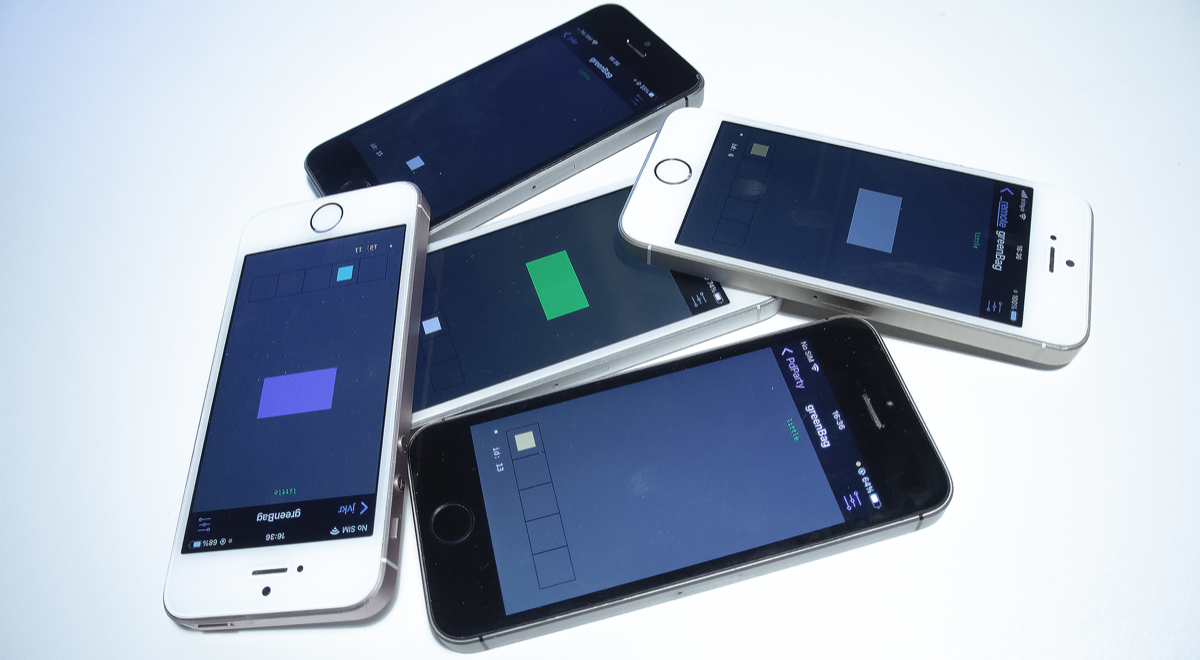
12 April 2023
Little Green Bag
This idea is born from the observation that at times, during free improvisation sessions, some performers tend to overestimate the value of their own contribution, thereby leaving too little or no space for that of others to bloom. While listening to such an accident happening, I thought of creating a tool that generates a score that simply dictates—or suggests—for each player when it is fine to play, and when to be silent.
Thinking it all through I decided—even before that session had finished—that mobile devices should be involved, which would make setting up straightforward, requiring little or no extra hardware and, relying on wireless connections, would avoid cables. And so, in the weeks after I thought this up, I gave it a try. A central computer was programmed to generate a score for an amount of connected phones, each running PdParty and a dedicated Puredata patch, that I named Little Green Bag, or LGB.
The way that this works is the following. Each phone that runs LGB makes a handshake connection with the central computer. This computer runs a server that receives Open Sound Control information from the phone. Based on the ip address, an identity is connected to the phone allowing unique messages to be sent to each device. Once all devices have connected, each player is assigned a group number. Next, a score is generated—just like the one below—in which all players are given an equal amount of playing time, divided over a variable amount of events. At specific points, the score loosely synchronizes devices with same group numbers so as to create group events.
Finally, the score is executed. During the performance, which may take any amount of time, a green light on the mobile device indicates that the performer is expected to play. When it turns black again, they should be silent. Two additional colors, white and blue, announce the upcoming change.
LGB by now has been used in a number of improvisation sessions. Apart from proposing an organization in which every player is given equal playing time, it has appeared to be a tool that facilitates dynamic changes between (groups of) players. This aspect has proven especially valuable in a setup where twelve improvisers were distributed around an audience in the center. Not only did it facilitate interesting spatial variations from the perspective of the audience, it also enabled remote communication between performers, creating a unique playing experience.
I wish to thank the Live Electronic Music class of 2022/23 for testing the first version of LGB and helping me improve it, as well as Richard Barrett, who suggested the grouping option.


